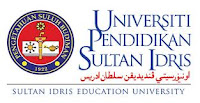Curriculum Specification Science Form 5
1. Syllabus.
Curriculum Specification or CS is a part of the syllabus itself. CS consist all about the subject from the introduction, Aim, Objectives and theme.
2. Course or Program of Study.
Curriculum Specification or CS science form 5 including:
a) Biology.
example,
THEME : MAN AND THE VARIETY OF LIVING THING.
LEARNING AREA: MICROORGANISMS AND THEIR EFFECTS ON LIVING THINGS
b) Chemistry.
example,
THEME : MATTER IN NATURE
LEARNING AREA : CARBON COMPOUNDS
c) Physics.
example,
THEME : FORCE AND MOTION
LEARNING AREA: MOTION
3. Course Content Outline
In this CS, every theme that has been determine come together with the outline.
Physics.
example,
THEME : FORCE AND MOTION
LEARNING AREA: MOTION
1.1
Analyse the
motion of
vehicles on land.
1.2
Analyse the concept of speed, velocity and acceleration.
1.3 Understanding the concept of inertia.
etc.
4. Planned experiences.
Example.
1.3 Understanding the concept of inertia.
::Design and conduct an
experiment to study the relationship between mass and inertia.
5. Academic Plan.
Example:
1.1
Analyse the
motion of
vehicles on land.
-Observe a bicycle and discuss its
structure and principle of operation.
-View charts, videos or computer
simulations and discuss the following:
(a) the structure and principle of
operation of vehicles with engines.
(b) the structure and operation of:
i. four stroke petrol engine,
ii. four stroke diesel engine,
iii. two stroke petrol engine.
Compare and contrast the following in terms of structure, operation and the efficiency of the engines.
(a) the four stroke petrol engine with the four stroke diesel engine,
(b) the four stroke petrol engine with the two stroke petrol engine.
6. Standard
in CS, the standard has been written as learning outcomes. Learning outcomes state that every points that every students should be able to at the end of the teaching and learning process.
7. Scope and Sequences.
the syllabus in CS are following the right sequences in every theme depending on the level. students will be teach the easiest to the hardest level.
8. Textbook.
In Malaysia, learning and teaching process happen in classroom using the text book as the first reference book.
In Malaysia, learning and teaching process happen in classroom using the text book as the first reference book.
Conclusion.
Curriculum Specification for Science form 5 consist all 8 aspect of curriculum.
Curriculum Specification for Science form 5 consist all 8 aspect of curriculum.








